Review – MSNJ Iron Composite Filament
In my last post I mentioned that I had some iron-impregnated filament to test. After our successful experiment with bronze filament a couple of weeks ago we were curious about how well other metal-flavoured materials would work. Well, I’ve tested it now, so let’s have a look at how it turned out!
What we got was a 0.5kg spool of MSNJ composite iron PLA filament. MSNJ say this contains “as high as” 30% iron by weight, which is a good deal less than the 80% in the bronze filament. The spool certainly had a lot more filament on it than the bronze did, neatly illustrating how much lighter it is. However, they also say it has the appearance of cast metal, that magnets will stick to it and that it can rust just like actual cast iron. Do these claims hold up?
So Does It Print?
MSNJ warn that this iron composite filament is more brittle than standard PLA and needs careful handling, but it’s nowhere near as brittle as the bronze version was and I managed to get it loaded into the Ender 3 with no problems at all. Then I loaded the inevitable Benchy file (remembering to turn supports off this time) and hit print.
While the Benchy was printing I searched Thingiverse for something that would look good in iron, and decided on an anchor. I got that sliced and loaded on a TF card, then headed back to the 3D printer to check out the Benchy.
The Benchy printed out rather nicely, with sharp details and no obvious glitches. However, it didn’t look like cast metal; it looked like black PLA with a semi-matt finish. Well, no problem; while the anchor printed I post-processed the Benchy the same way as I did the bronze skull, with some 600-grit sandpaper followed by a rub with Brasso. The result looked like highly polished black PLA.
By this time the anchor had finished printing, and it also looked like black PLA.
So, neither object looked at all like iron. At this point I decided to test the claim that this filament will stick to magnets. The battery cover on my e-cig has a neodymium supermagnet at each end, so I set it up at an angle and tried to stick the Benchy to it. What I found was that, at around a 30° angle, the iron-loaded Benchy does stay attached to the magnet, while a standard PLA one slides to the bottom. However, you couldn’t use a magnet to pick it up; the magnetic effect is nowhere near strong enough to overcome the Benchy’s weight. It might work with a much more powerful magnet, but unfortunately I don’t have any of those.
Finally, I decided to see if I could get the material to rust. MSNJ say the iron content will rust if you leave it in a humid place, but I didn’t want to delay this article for a couple of months while my prints sat in the kitchen. Instead I decided to hurry things along a bit by filling a jug with vinegar and dropping them into it. Vinegar is great on chips, but it’s surprisingly savage on iron; try leaving a nail in a glass of it overnight and you’ll see what I mean. However, after 24 hours in the vinegar both prints showed no sign of rusting. So I left them there for another 24 hours – and, finally, a faint brown stain appeared on the Benchy’s hull where I’d sanded it.
I looked at this stain under a 40x stereomicroscope and the layer boundaries on the hull are indeed speckled with tiny crystals of rust. Interestingly, the rust only appears in the layer boundaries; there’s no sign of it within layers. There was no sign of it on the anchor, either – just on parts of the Benchy that I’d sanded.
The Verdict
I have to say I’m quite disappointed with this iron composite filament. It’s a perfectly competent black PLA, as long as you don’t want to make anything load-bearing out of it – it’s as brittle as MSNJ say it is, and in fact when I made a strength-test hook from it, it snapped while I was hanging it from the door. However, it’s four times the price of regular black PLA; the only reason to buy it is for its iron content, and that just isn’t high enough. With some careful sanding and a wipe of vinegar you could make something that looked a bit like rusty cast iron, but compared to the bronze filament it just isn’t very metallic. If you really need an iron-impregnated filament I’d suggest you find something with a higher metal content than this one.

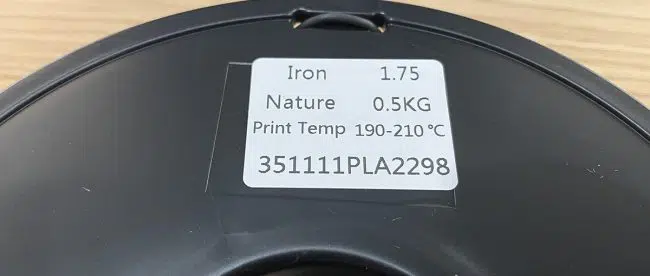
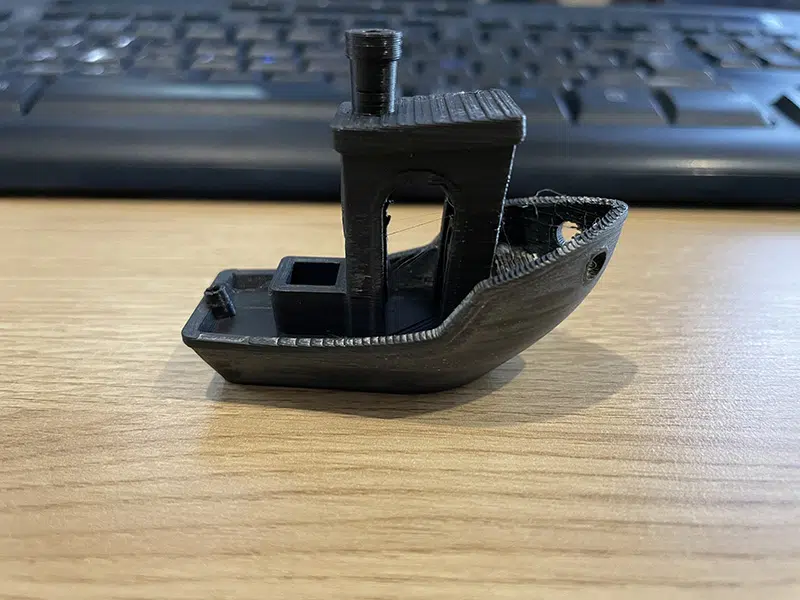
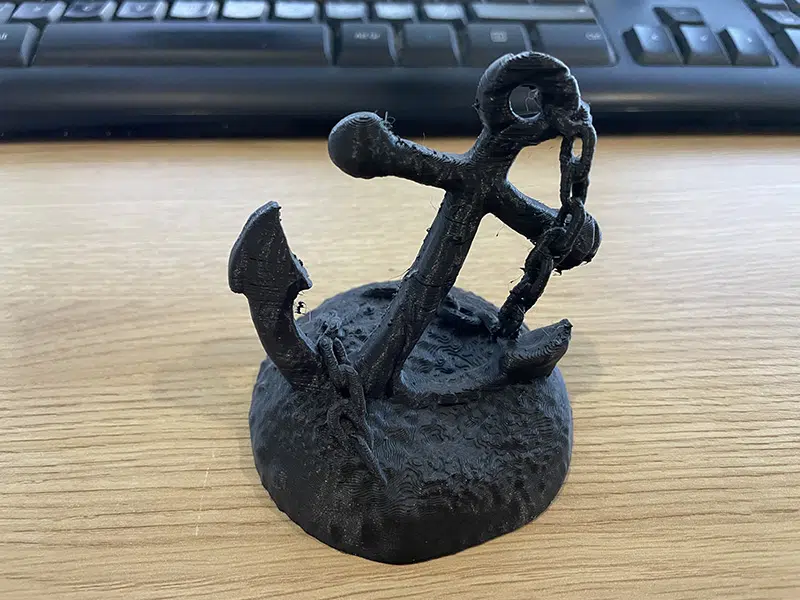


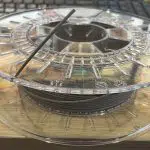
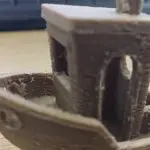
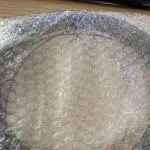
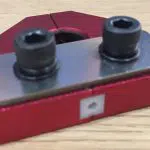
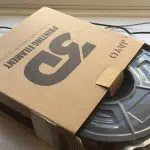

Leave a comment
You must be logged in to post a comment.